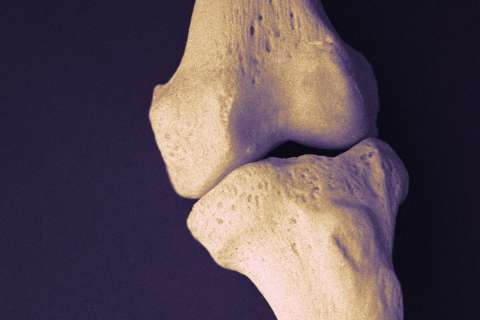Dear Doctors: My husband slipped while out on his boat and cracked two ribs. He had a broken rib as a teenager (varsity football) and remembers having his chest wrapped, but that’s not happening this time. Why not? He’s in a lot of pain and it seems like wrapping could help.
Dear Reader: Although your husband is facing pain and discomfort as a result of the fall he took, those two cracked ribs are proof that the structures of his chest did their intended jobs and helped him escape a graver injury. We’re specifically talking about the rib cage, which is an ingenious bit of architecture. It’s light, airy and flexible, supports the upper body and allows for a wide range of motion. This includes the ability to take in and expel deep breaths. At the same time, the rib cage is highly effective at protecting important and vulnerable organs and anatomical structures, including the heart and the lungs.
Rib injuries typically fall into three categories: bruised, cracked and broken. They can also include damage to the muscles and cartilage, which are the soft tissues holding the whole structure together. Injuries to the ribs typically occur due to some type of blunt force to the chest, such as a car accident, a fall, being struck by an object or from a physical assault. It’s less common, but possible, to injure your ribs while coughing. Ribs are most likely to break at their weakest point, which is the outer curve. Severe injuries can lead to a punctured lung, ruptured aorta or lacerations to the spleen, liver or kidneys -- each of which can be life-threatening.

As your husband has let you know, rib injuries can be extremely painful. In fact, pain at the injury site is the most common symptom. Additional symptoms include pain when flexing the rib cage, either by breathing or moving; muscle spasms; difficulty breathing; audible crunching sounds that arise from the injury site; and a visible change to the appearance of the chest. A rib injury diagnosis often begins with the patient detailing the incident that led to the symptoms. This is followed by a physical examination, and sometimes by a chest X-ray. Unlike the bones of the legs and arms, the anatomical structure of the ribs means it’s not possible to immobilize them with a cast as they heal.
At one time, it was common to wrap the chest in an attempt to immobilize the damaged bones. However, this limits the person’s ability to breathe deeply and freely, which can increase the risk of developing pneumonia. Instead, treatment is now focused on pain relief, reducing inflammation and rest. This includes the use of ice packs and pain meds (both prescription and over-the-counter), and the avoidance of activities that may stress the injured area.
Depending on the extent of the injury, it can take from six weeks to several months for rib damage to heal. For many patients, once the initial pain is under control, limiting activities to prevent re-injury often proves to be the toughest part of the treatment.
(Send your questions to [email protected]. Owing to the volume of mail, personal replies cannot be provided.)





